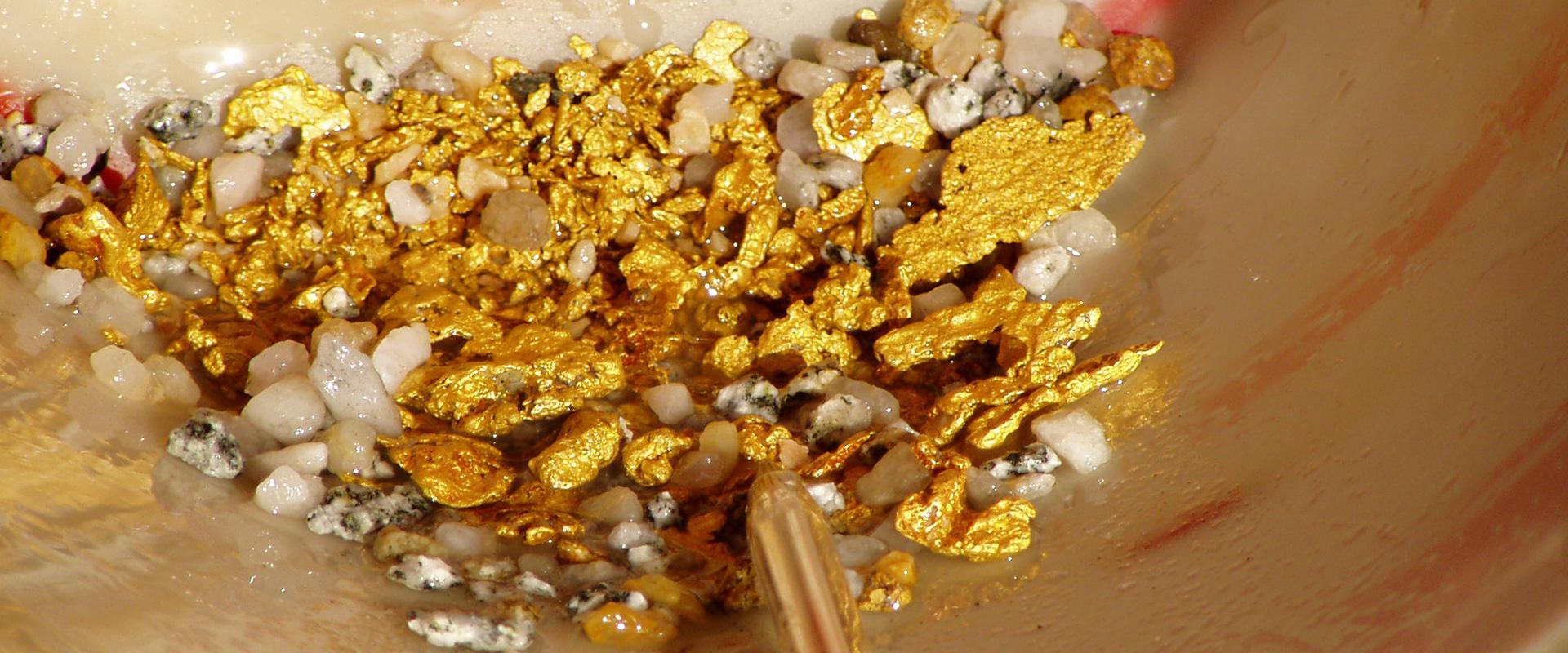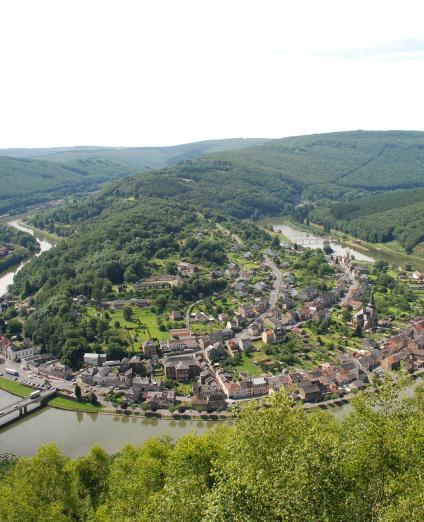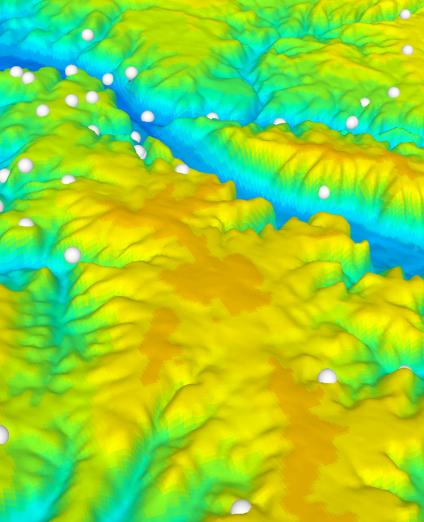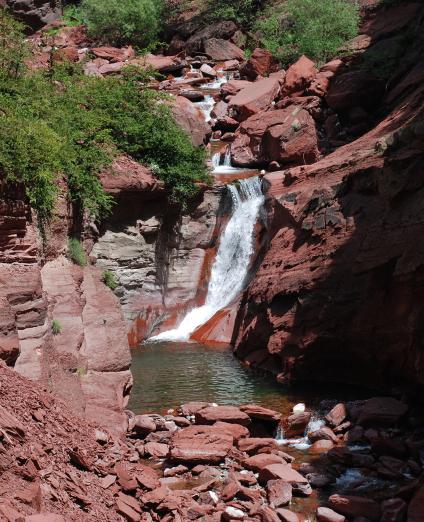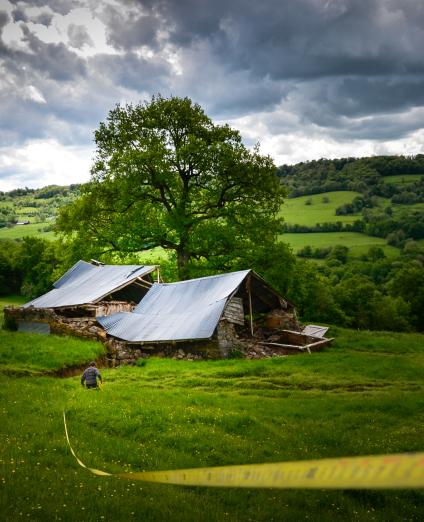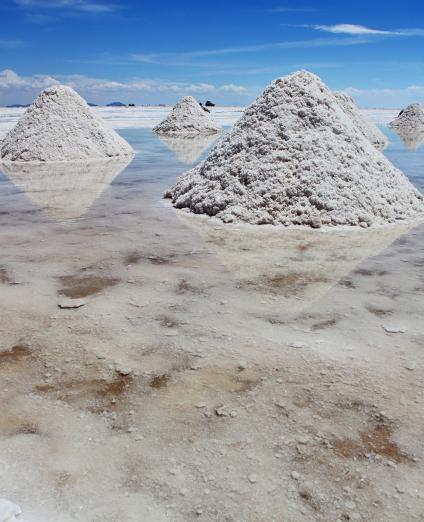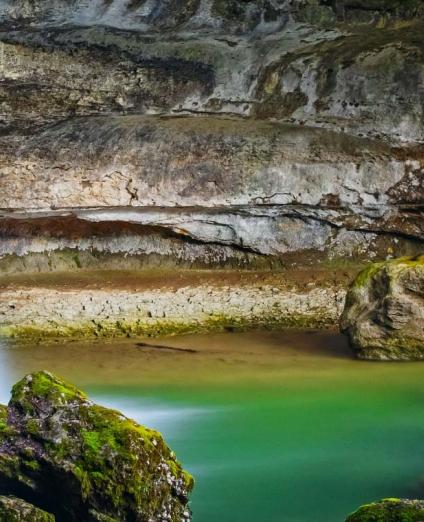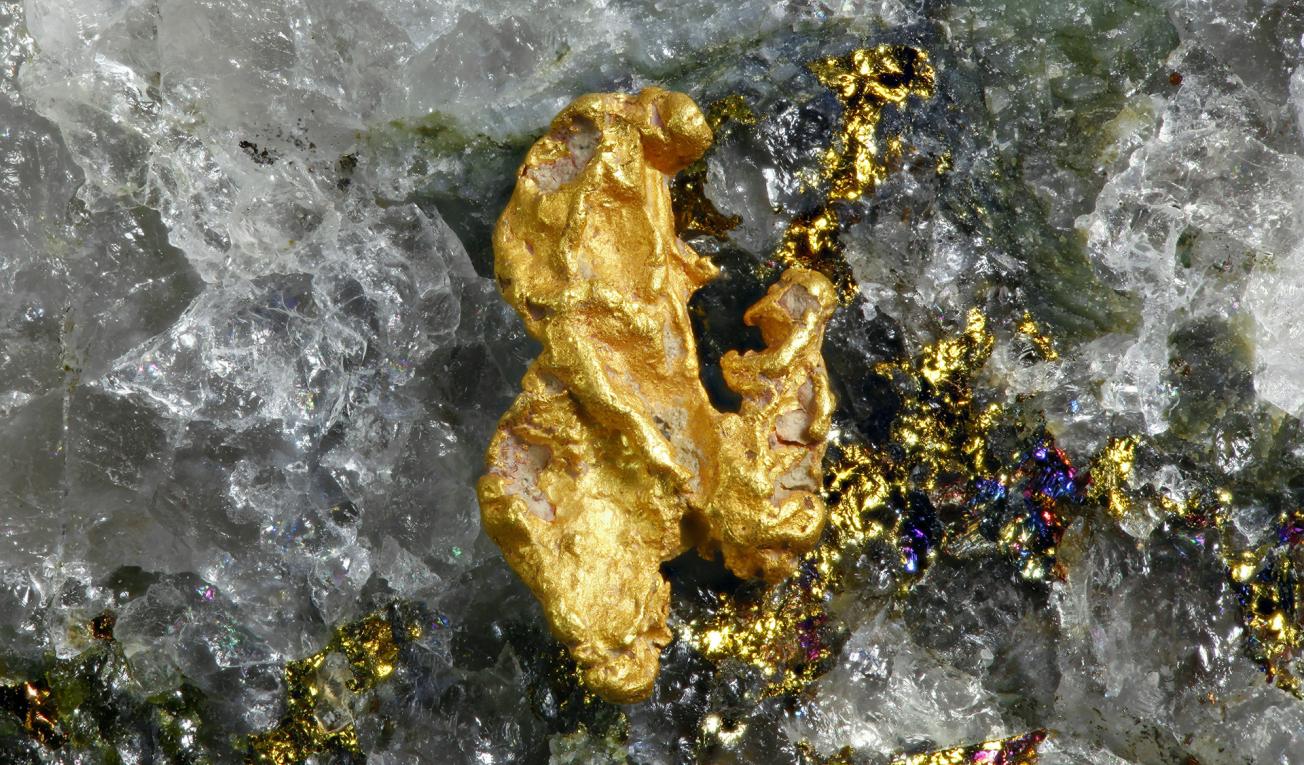
Gold nugget and quartz (Lapland, Finland, 2018).
© AdobeStock - Henri Koskinen
Gold is the precious metal that has always fascinated people because of its beautiful golden colour, its density, the ease with which it can be fashioned and its resistance to wear.
As a geological and geochemical engineer, I was lucky enough to be able to lead exploration projects, first in the high-altitude tropical forest on the Zaire-Nile ridge in 1977 and then in the great Arabian desert in 1982, the land of the Queen of Sheba and the supposed site of King Solomon's mines.
They are two totally different environments: the first shelters a magnificent primary forest at an elevation of 2400m, Rwanda’s ‘water tower’, the second, very hot and arid, is much vaster, and its rocky regs (desert pavements) alternate with dunes and harrats (volcanic plateaux).
Whatever the context, the prospector’s approach is the same, i.e., select a favourable area for deploying suitable prospecting methods. In Rwanda, this was a gold-rich alluvial area at the headwaters of the Nyungwe River (a river still exploited by small-scale panning operations). In Arabia, they were areas with a high concentration of small ancient mines scattered over a large peneplain.
The next step is to look for the primary sources of the gold being mined and, like a detective, the geologist will follow the rivers upstream and examine the slopes to look for anomalies such as abnormal gold concentrations in the ground and then identify the source by trenching and core-drilling. In Rwanda, as part of a UNDP-funded project and with the support of the local Ministry, we were able to apply high-density square mesh sampling with in situ analysis of gold (detection limit 5 ppb) and its related trace elements. This technique enabled us to locate a new gold vein, a source that the former settlers had never been able to locate as they had stayed in the valleys. Unfortunately, this resource proved to be uneconomic at the then current gold price of $150/oz.
In 1982, the desert climate presented us with a new challenge. It was impossible to apply methods suited to a tropical environment. On the Arabian plateau there is often no soil and the few wadis are dry, reducing their ability to transport particulate gold. While observing the frequent sandstorms and “dust devils” on the reg, we had an idea: given the lack of water, why not use the soil fractions transported by the wind, which would enlarge the halos around the primary targets.
A crucial question was “which fraction of the sand is best suited to concentrate the weak gold signal scattered around the deposits on the reg?” A first test concluded that a coarse fraction should be used, as it was heavier and remained more indigenous, thus closer to the target. Geochemistry using this fraction proved a failure, due to the excessive heterogeneity of the materials and the small amount of material collected. I therefore resumed surface dispersion studies for 3 years around known gold targets, or new indications discovered by surface geochemistry. The surprising conclusion of these tests was that looking for the finest fraction (<60µm) was the most effective way of locating hidden deposits. Since there was no drainage on the flat regs, we were able to develop a new method of large-mesh (1km x 1km) composite sampling.
This method produced initial results in situ and new types of mineralisation were identified. Unfortunately, the mission to Arabia ended before we could generalise this method for other applications. Twelve years later, when applied by BRGM teams in northern Mauritania, in a similar context, it led to the discovery of a very rich gold deposit: the Tasiast deposit. In the same country, further south, we were able to make a identify a major source using the traditional method of prospecting for gold with a pan.
Modern prospectors now have a wide range of high-performance tools at their disposal (portable analyser for geochemistry, but also radar, GIS synthesis, airborne geophysics, airborne spectrography, etc.). These techniques should allow large and medium-sized companies to renew their portfolios to meet the ever-increasing demand for this metal, whose prices are soaring.
Dr Ignace Salpeteur, BRGM geological engineer and geochemist
Speaker
Dr Ignace Salpeteur, retired, former geological and geochemical engineer at BRGM
Practical information
On the 1st of February 2022 at 8pm
Muséum d'Orléans pour la biodiversité et l'environnement (MOBE)
7 Rue Marcel Proust, 45000 Orléans, France
Free conference

